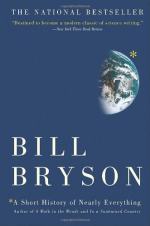
|
| Name: _________________________ | Period: ___________________ |
This quiz consists of 5 multiple choice and 5 short answer questions through Part 5, Chapter 25.
Multiple Choice Questions
1. Which of the following is not one of the five major extinction episodes on Earth?
(a) Triassic.
(b) Toarcian.
(c) Cretaceous.
(d) Devonian.
2. Halley believed that once scientists figured out the distance from the sun to the Earth, they could then calculate what?
(a) Distances to other planets.
(b) Weight of the sun.
(c) Weight of Earth.
(d) Distances to distant stars.
3. Mitochondria convert food and oxygen into ATP, which is what?
(a) Waste that needs to be discarded.
(b) Energy used by the body.
(c) A self-destruction signal.
(d) A new generation of mitochondria.
4. The internal workings of cells are:
(a) Identical from one cell to the next.
(b) Understood perfectly.
(c) Not understood very well.
(d) Exceedingly simplistic.
5. The author states that extinction seems to be:
(a) Because of natural disasters.
(b) Almost exclusively caused by humans.
(c) A natural part of the life cycle.
(d) A rare occurrence on Earth.
Short Answer Questions
1. Earth is the only planet in the solar system to have what?
2. Using a depth sounder during World War II, Harry Hess discovered that ocean floors:
3. Which of the following is not part of an atom?
4. A hundred years before Einstein's math analyses confirmed the existence of atoms, this self-educated scientist suggested everything is made up of tiny, unchangeable particles:
5. According to the Reverend William Buckland, the biblical reference to "in the beginning" with regards to the formation of Earth could refer to:
|
This section contains 265 words (approx. 1 page at 300 words per page) |

|




